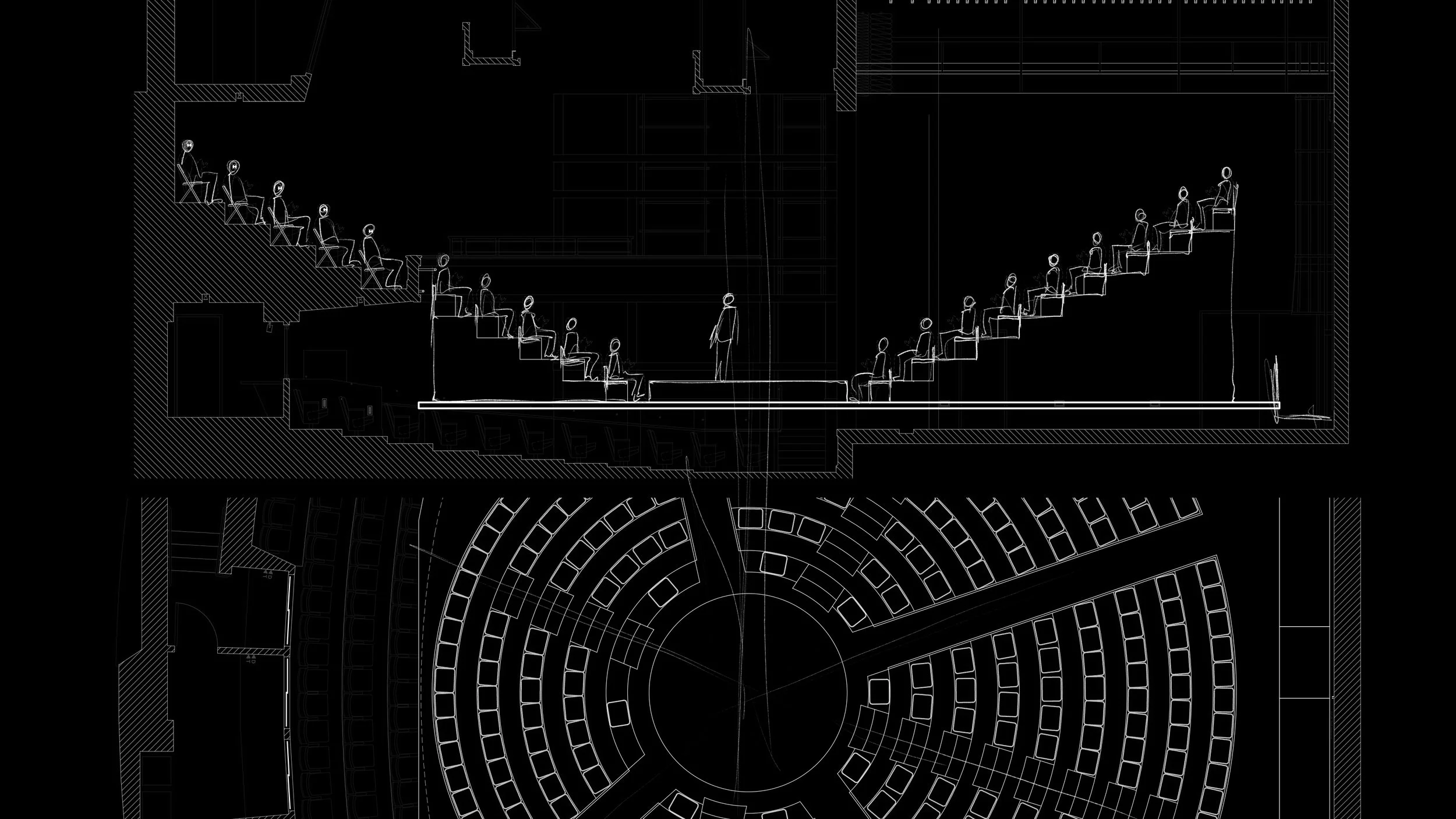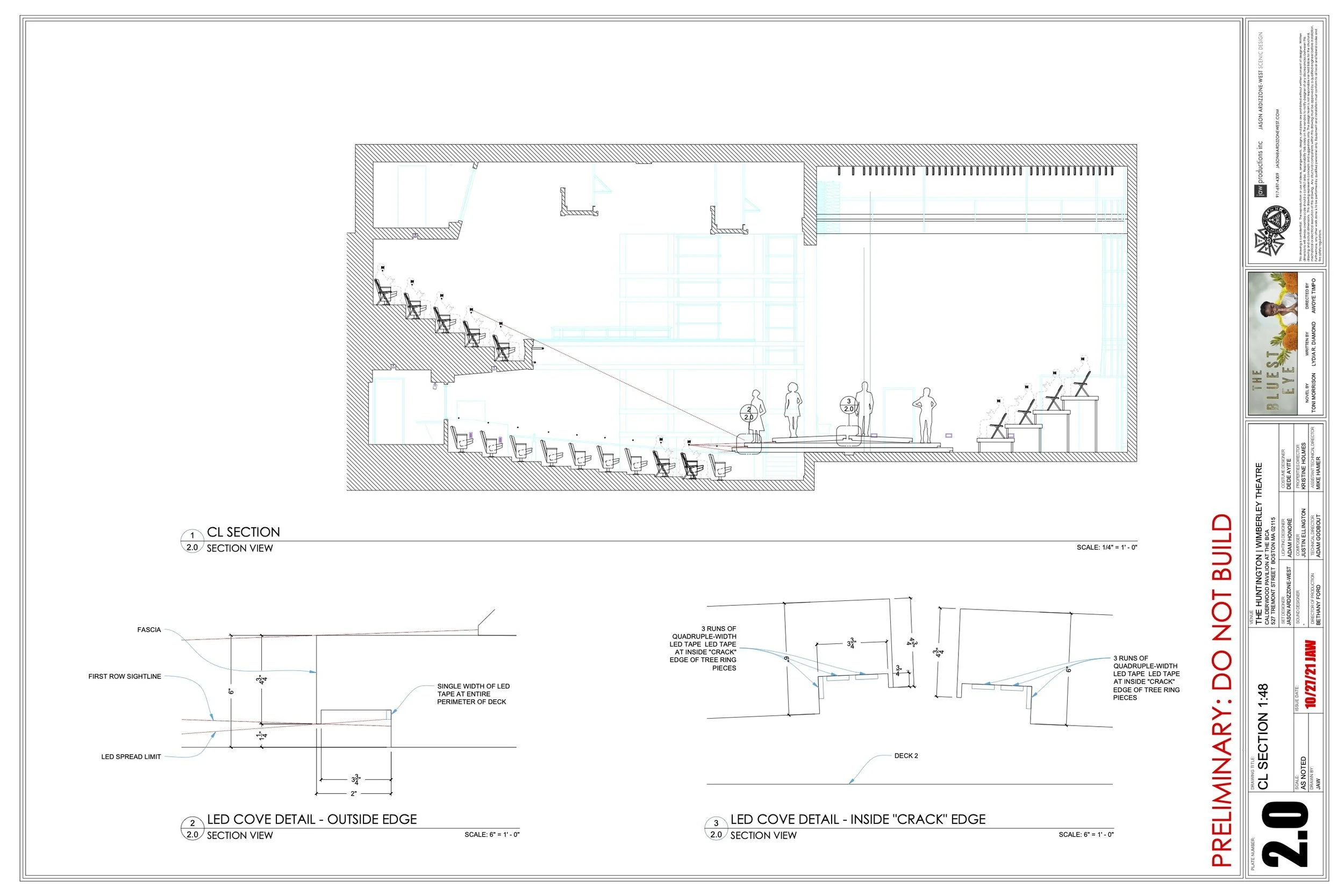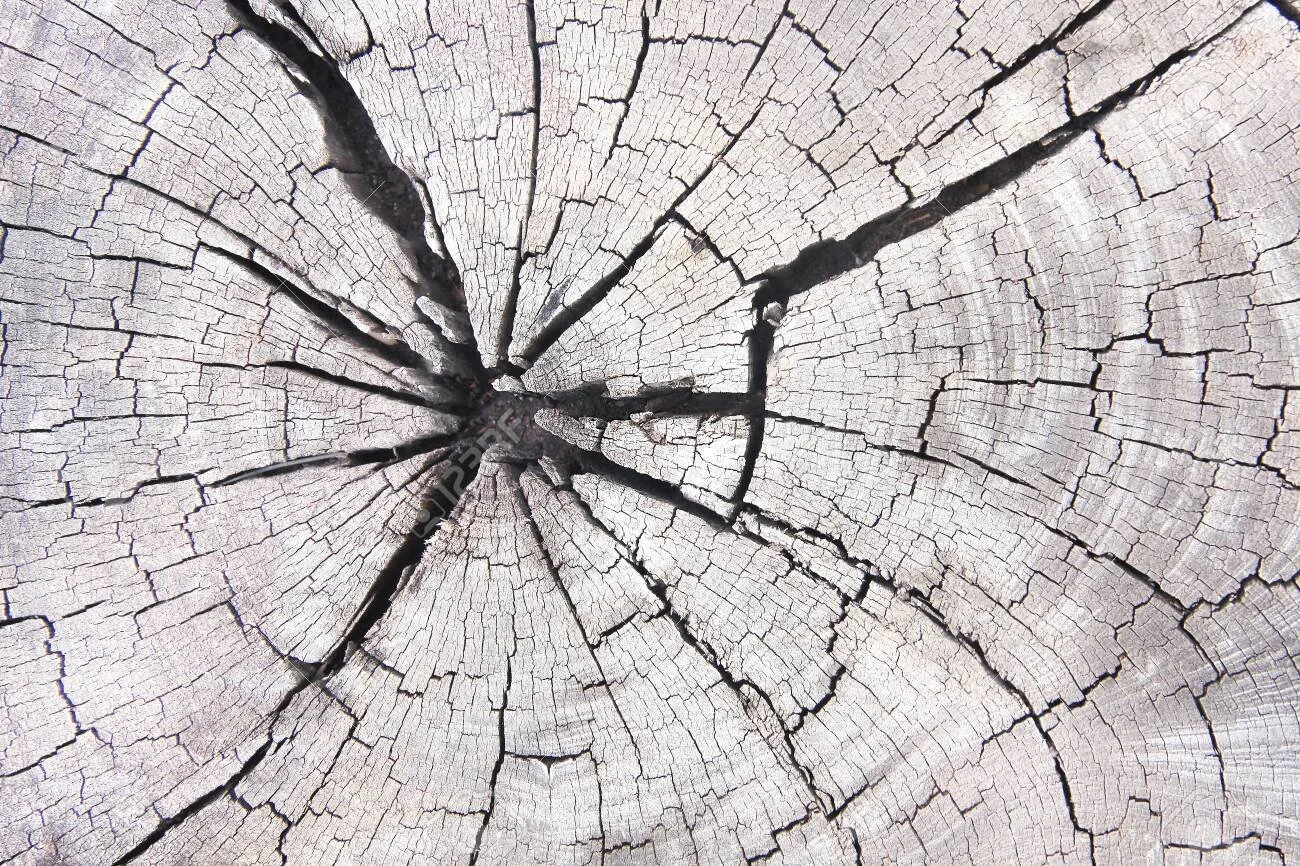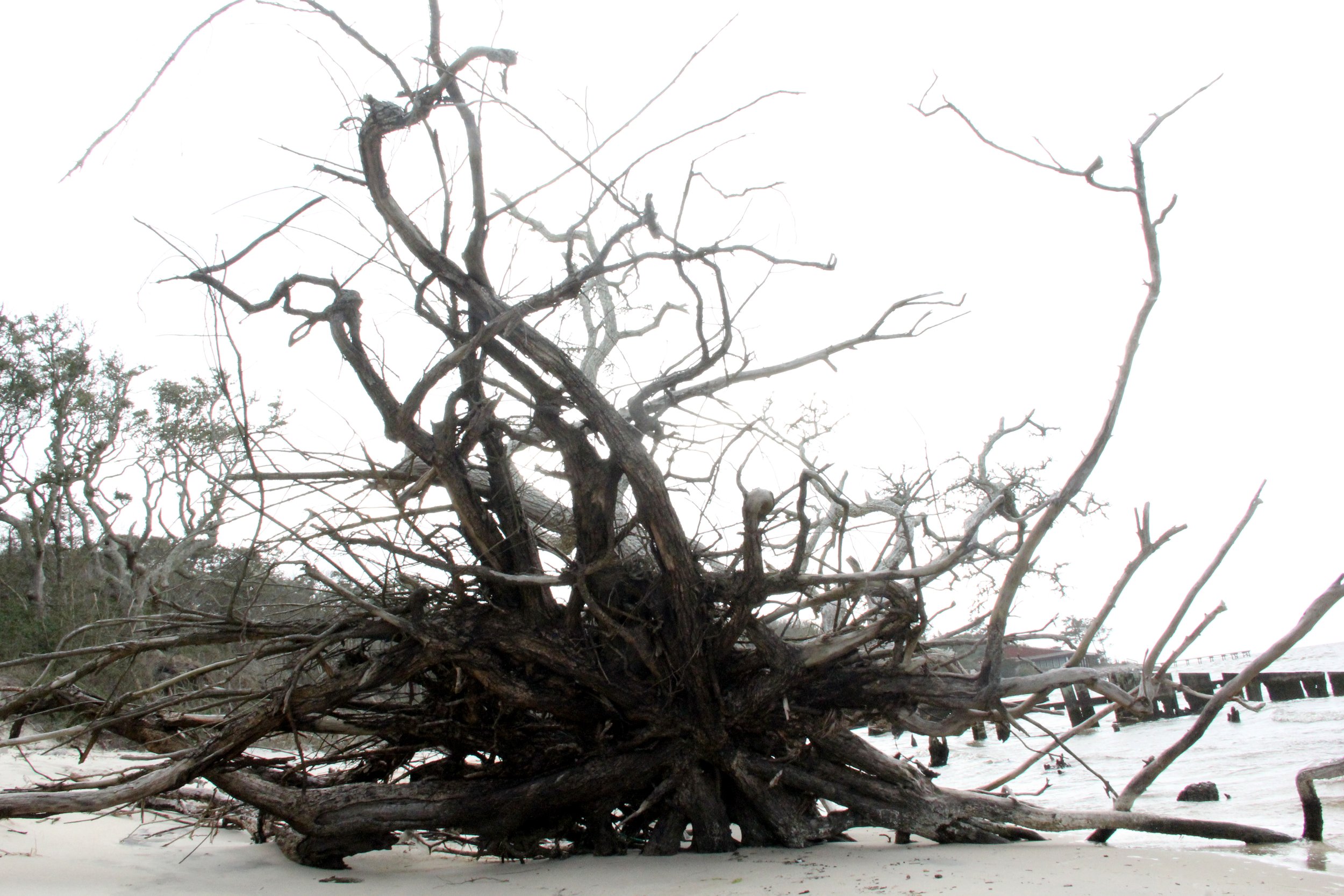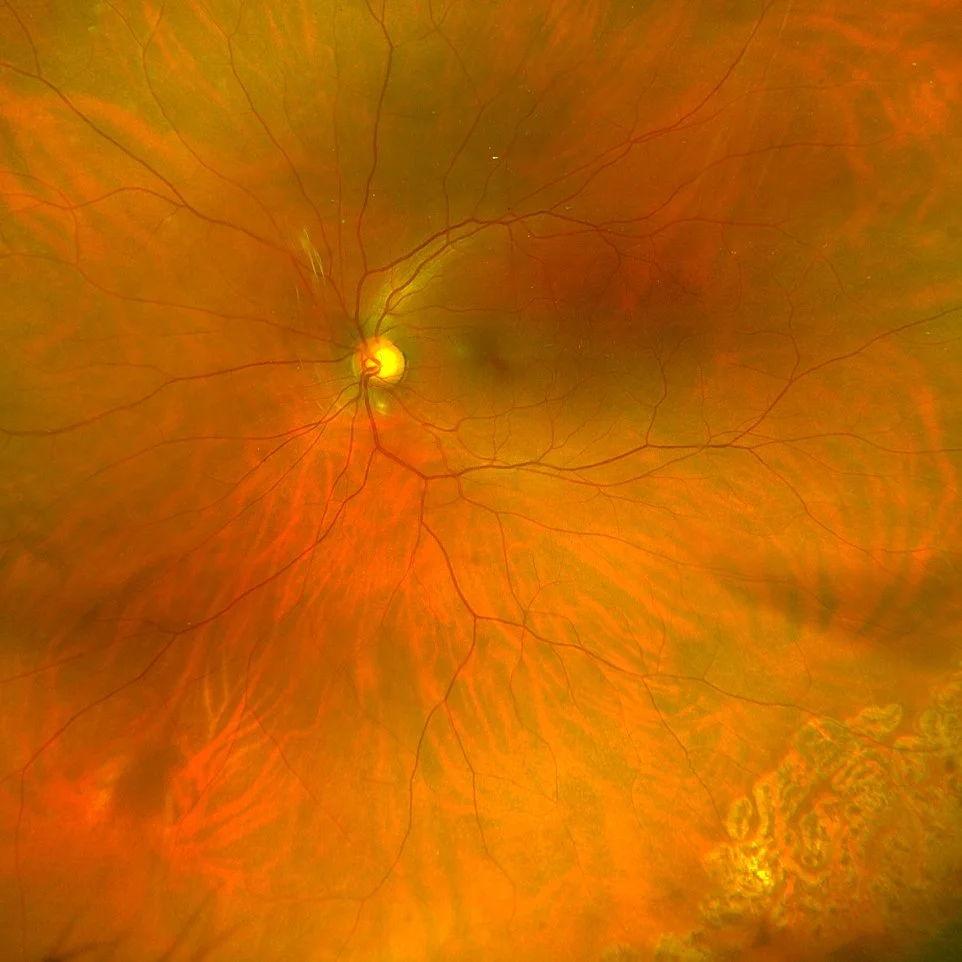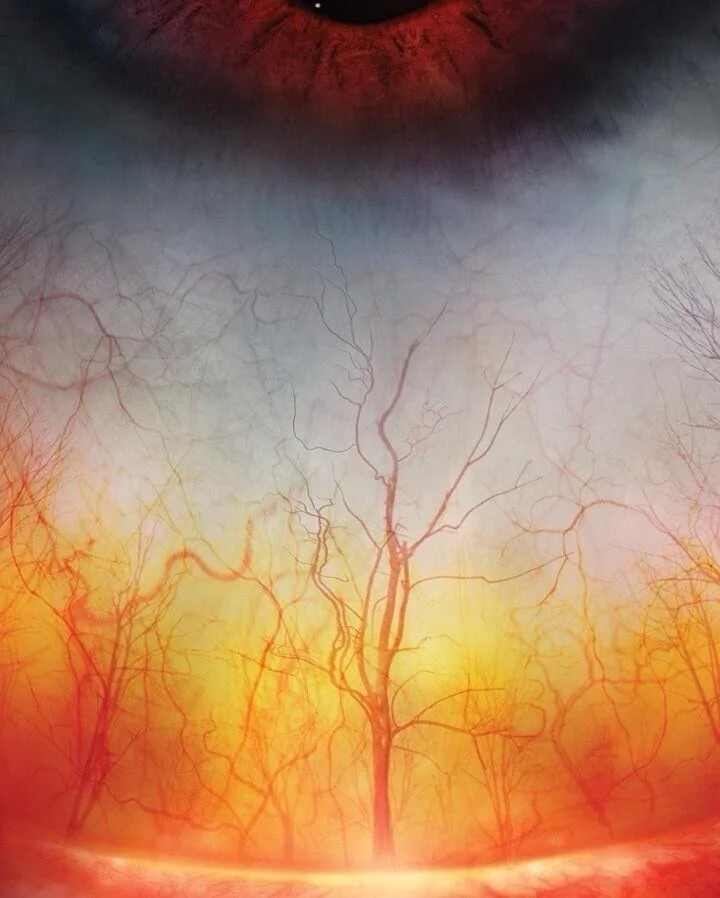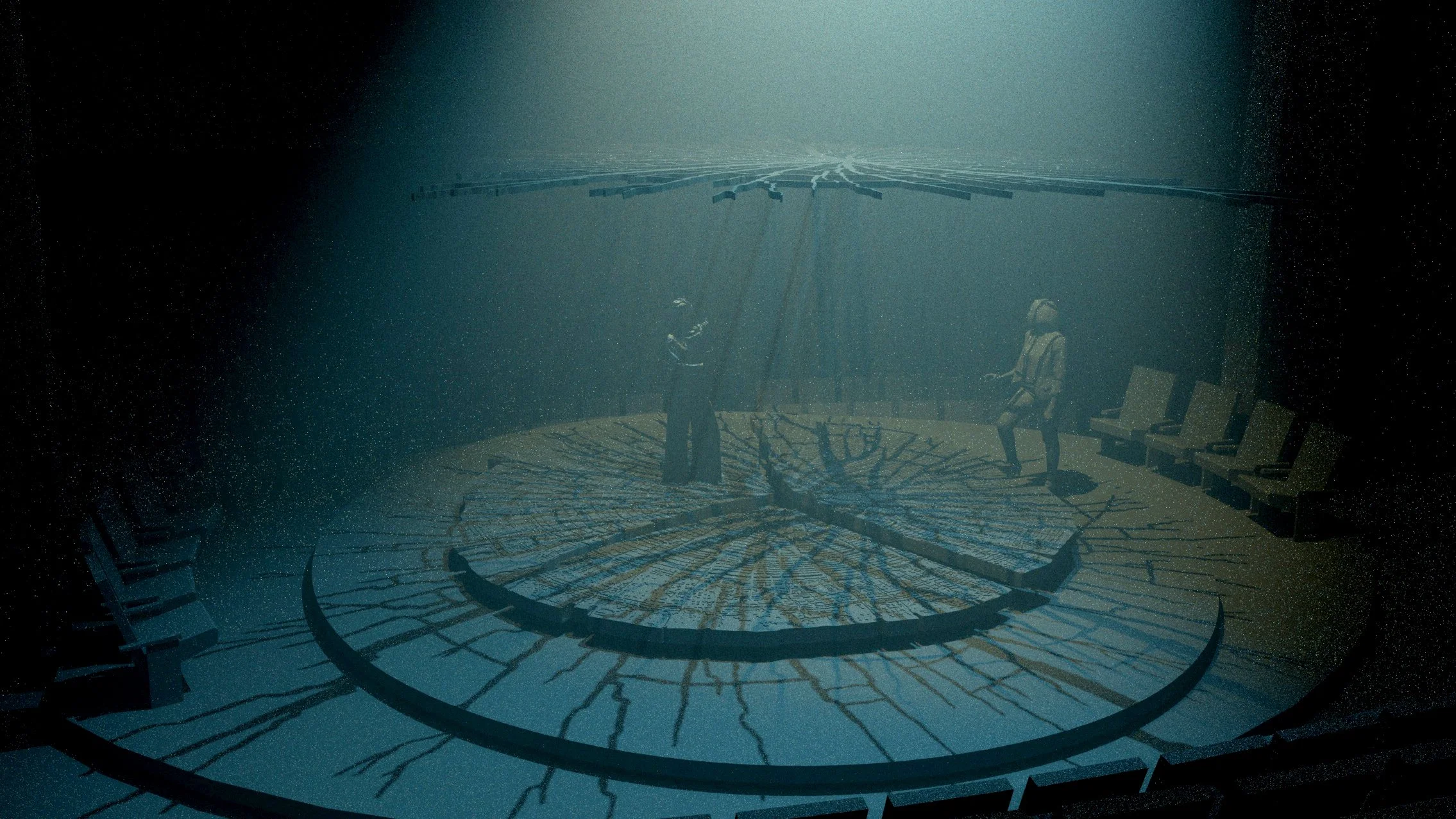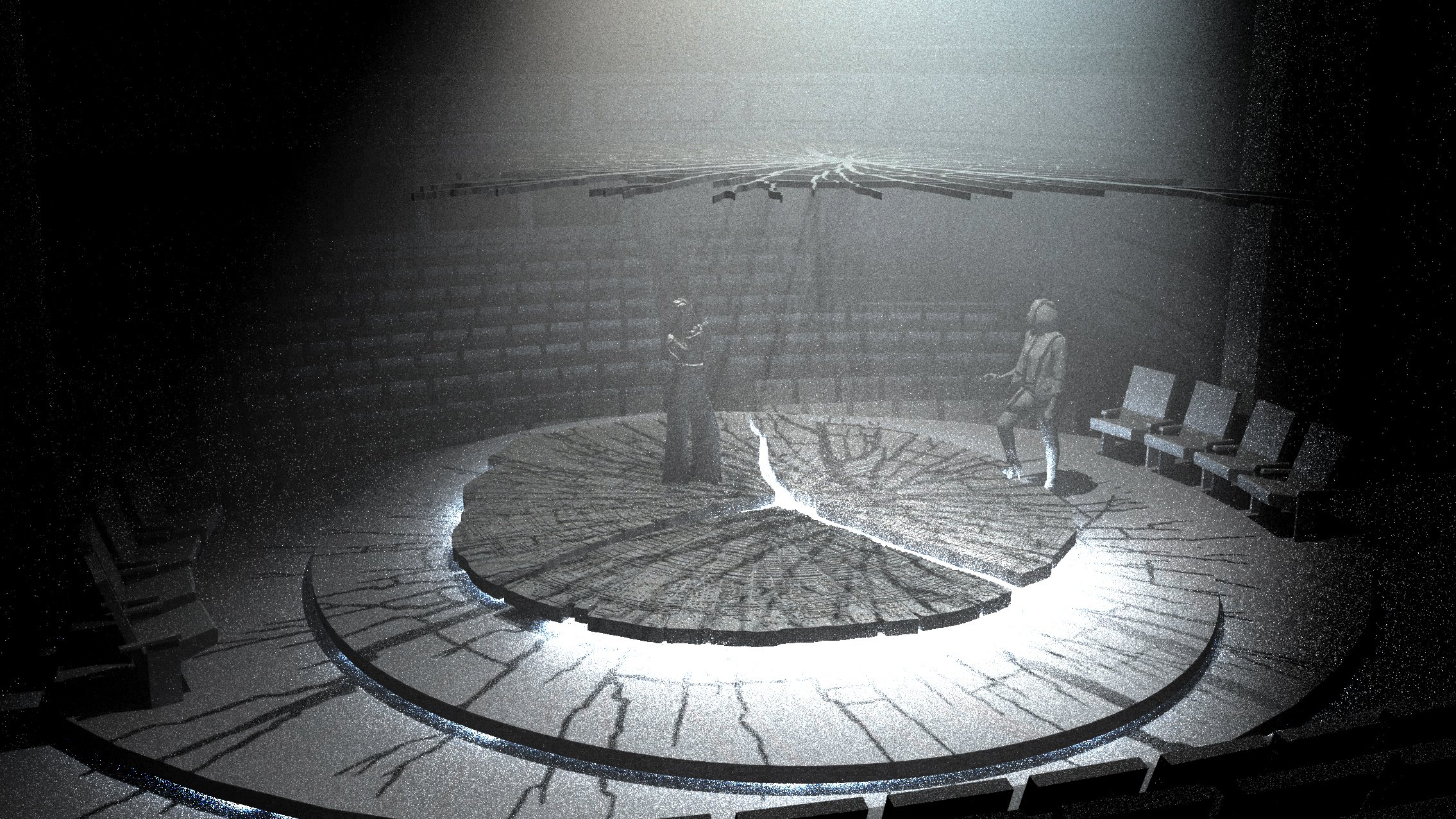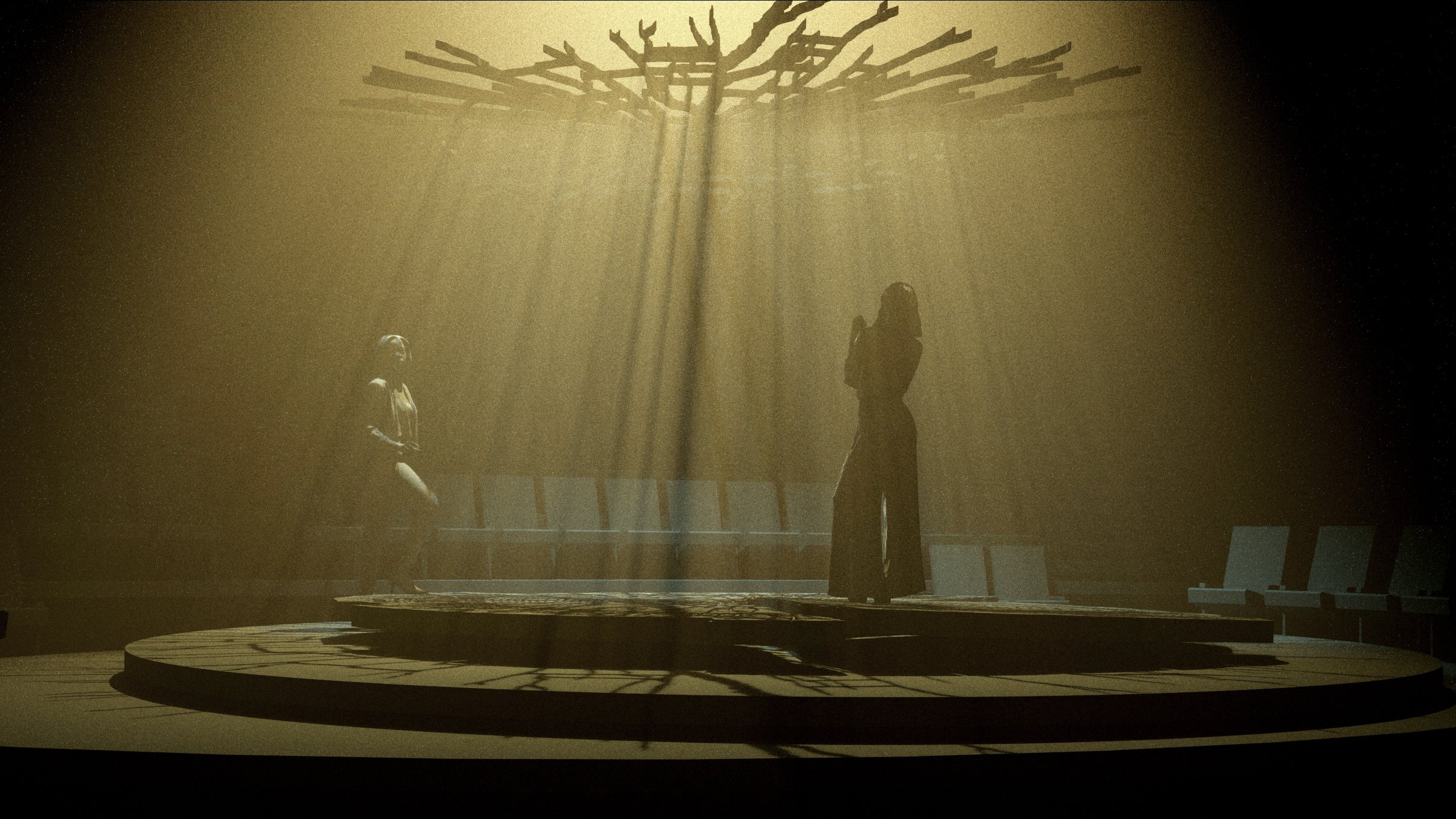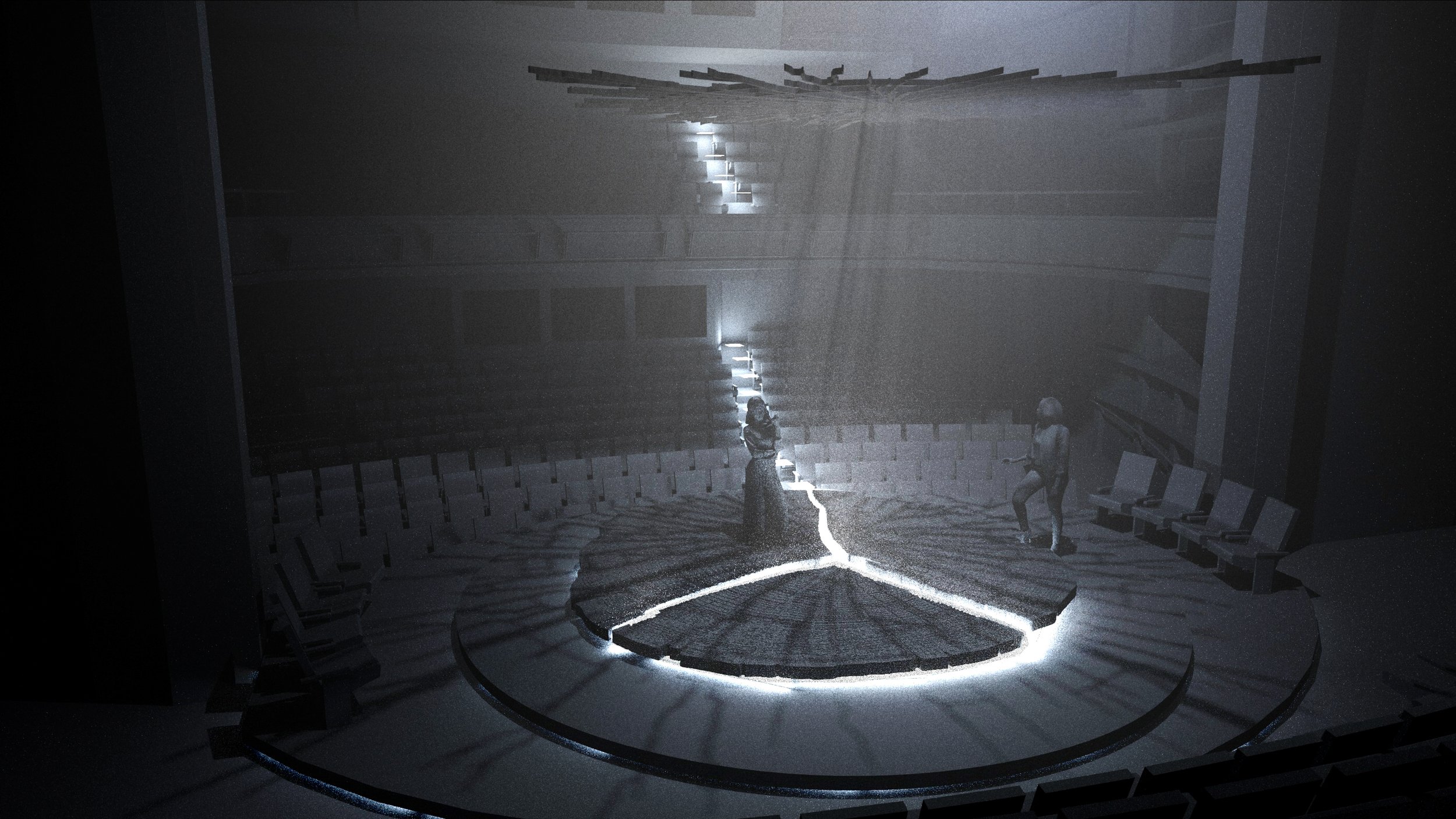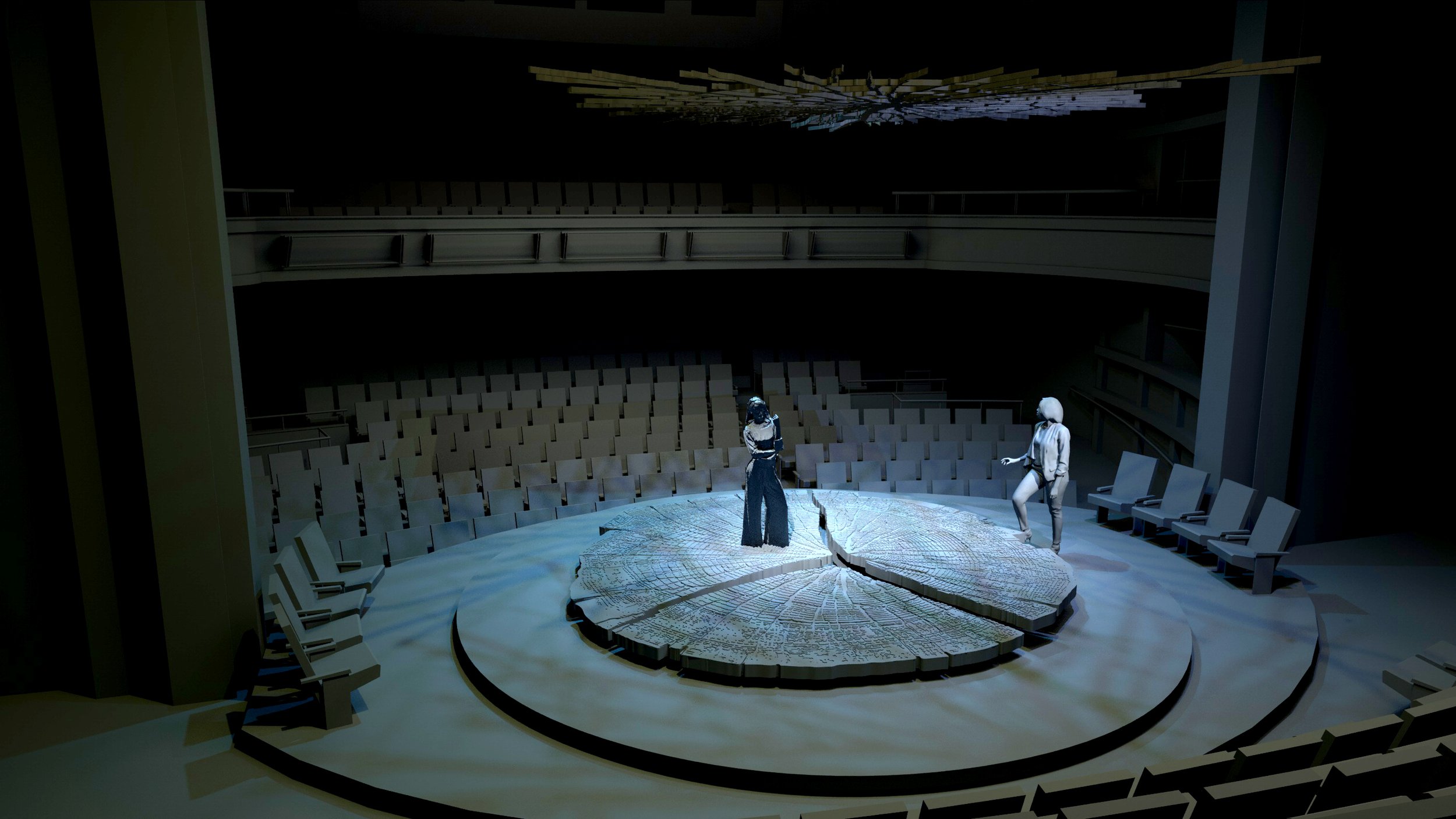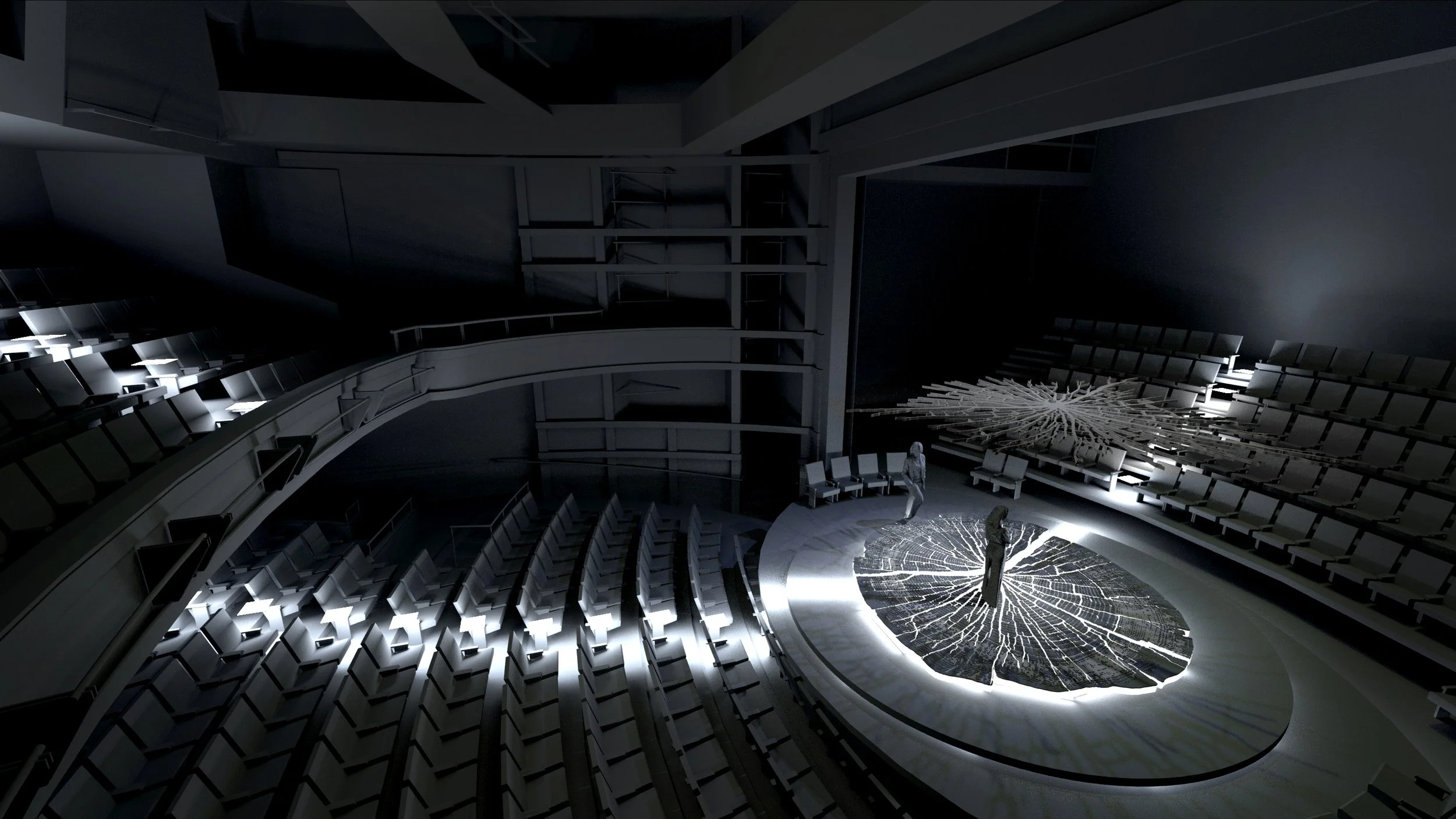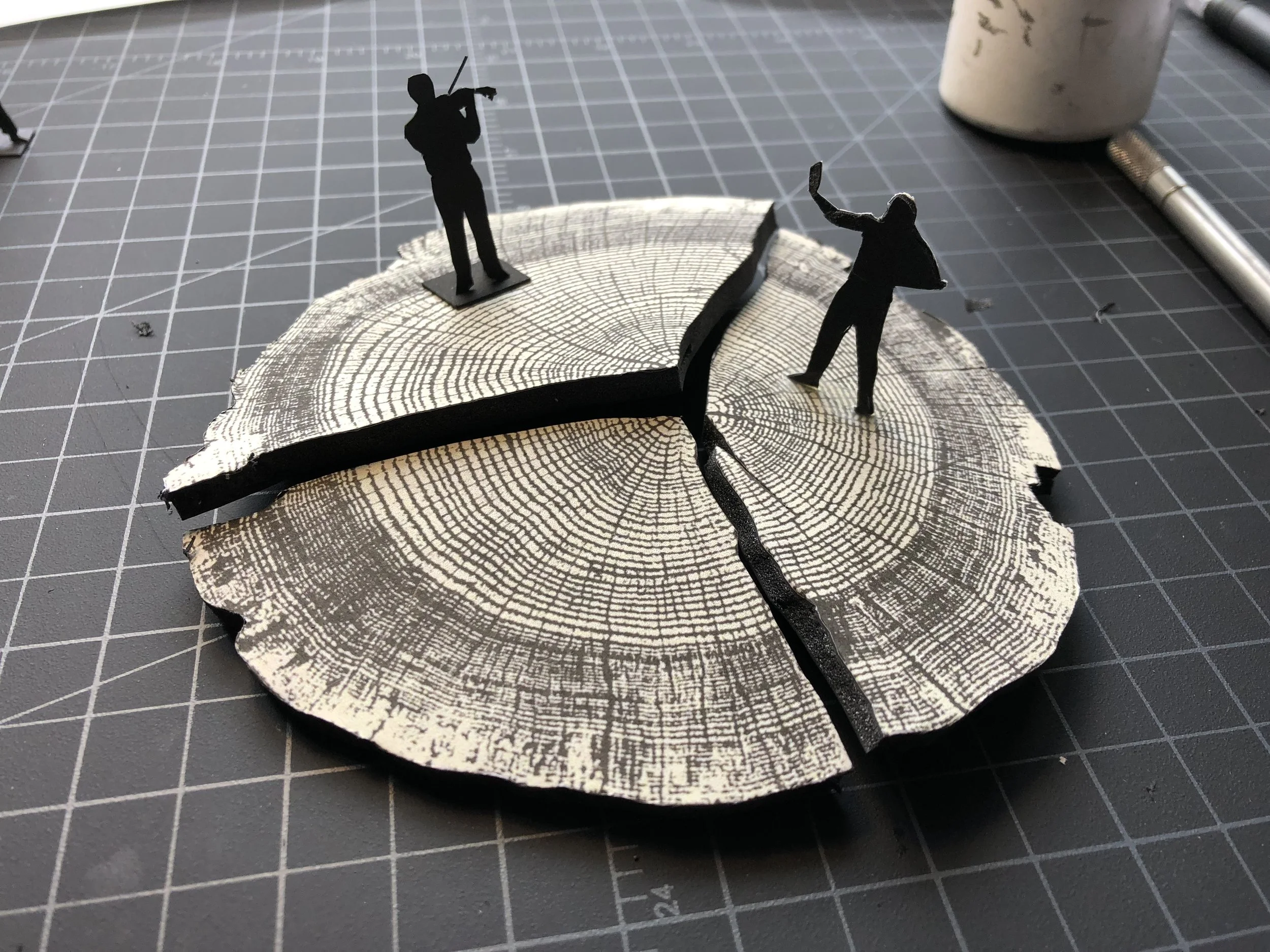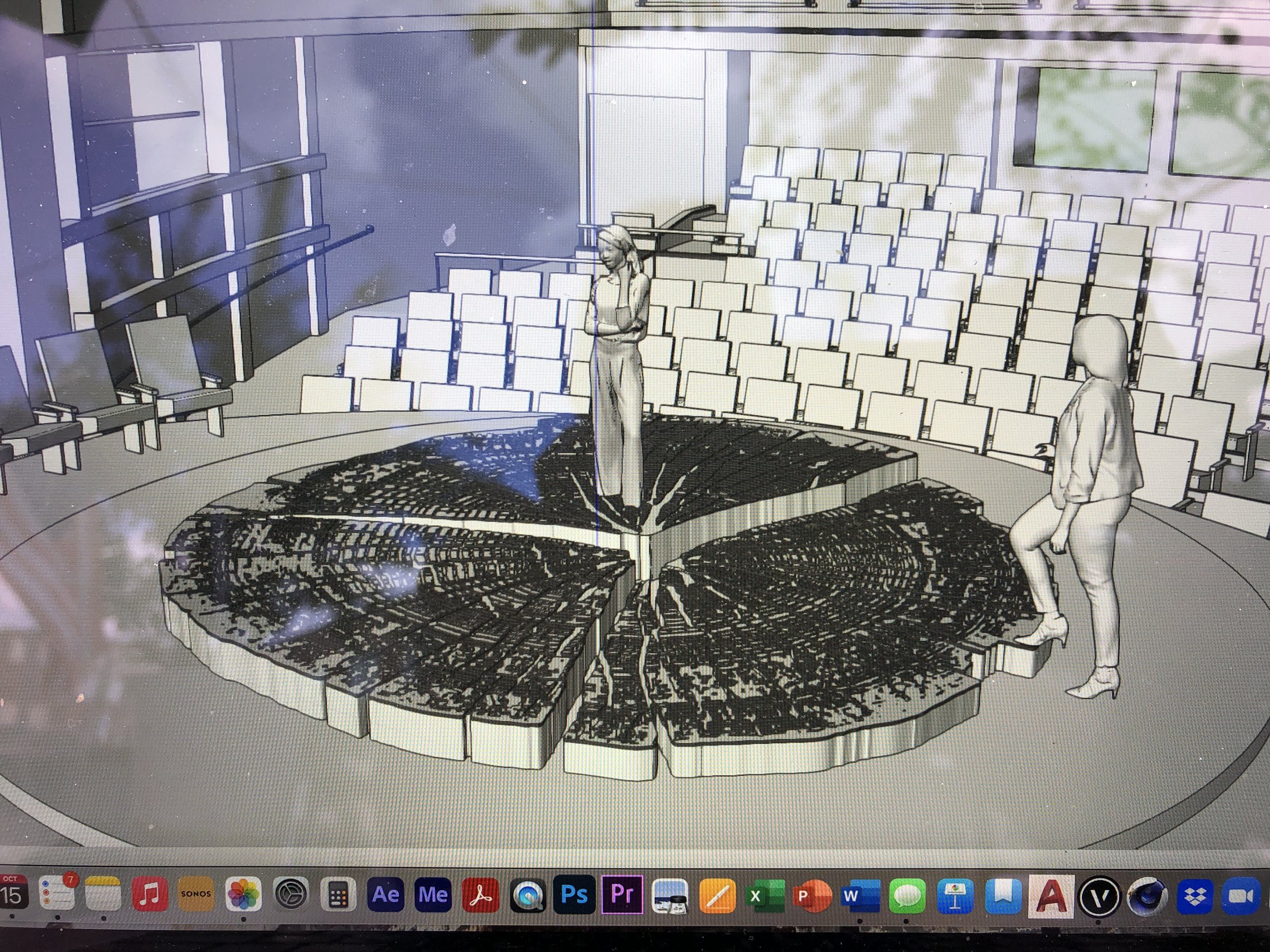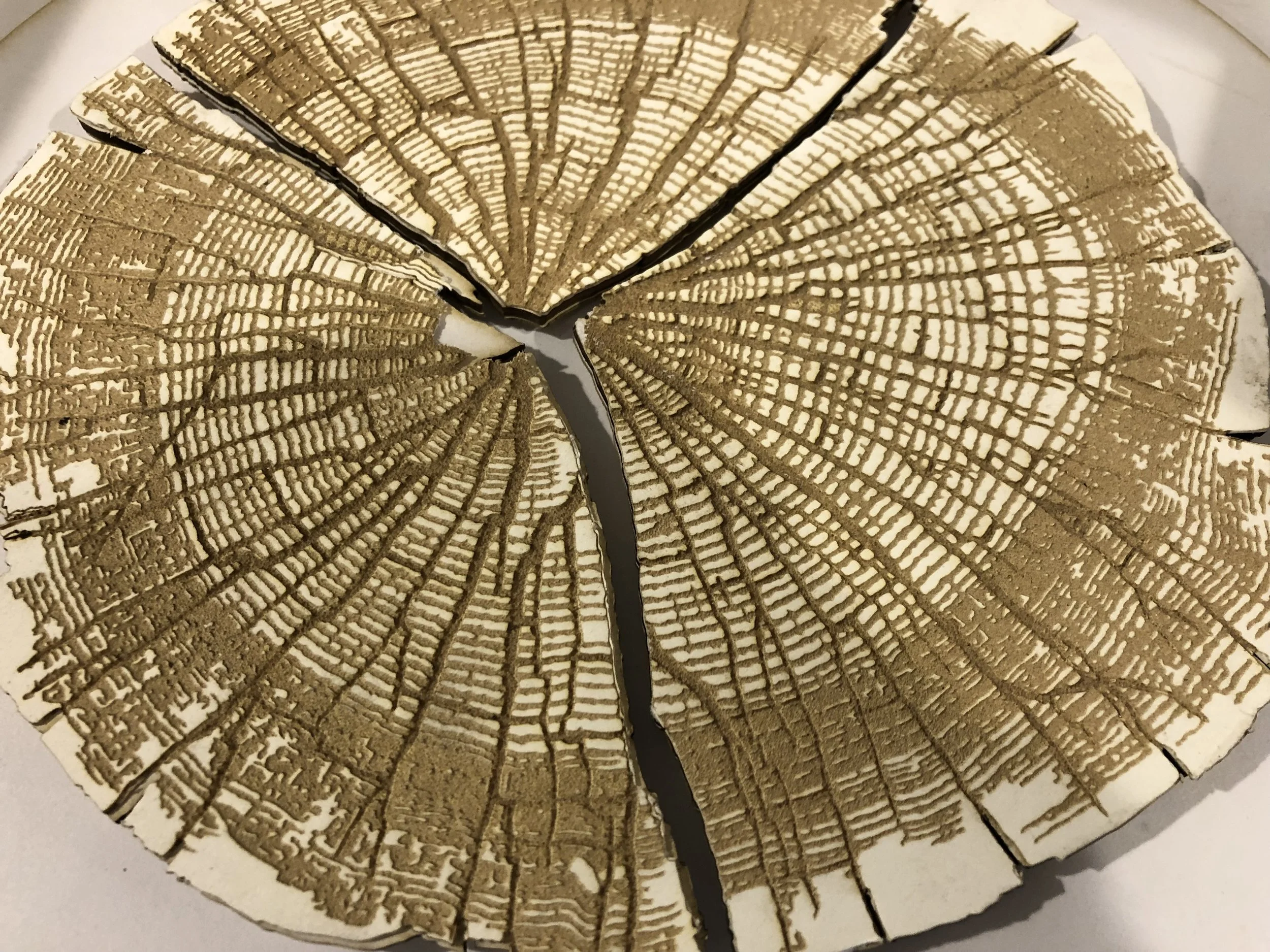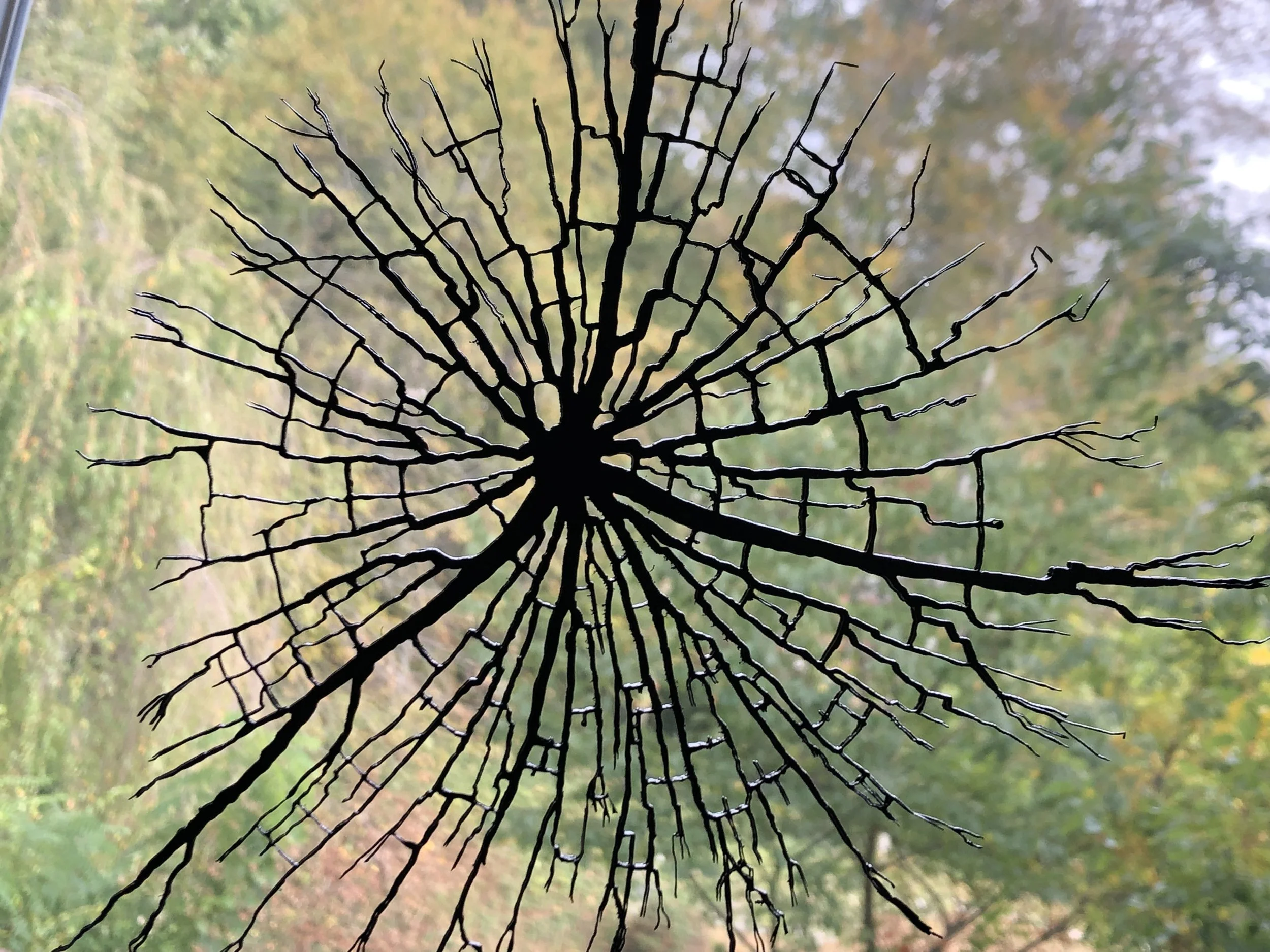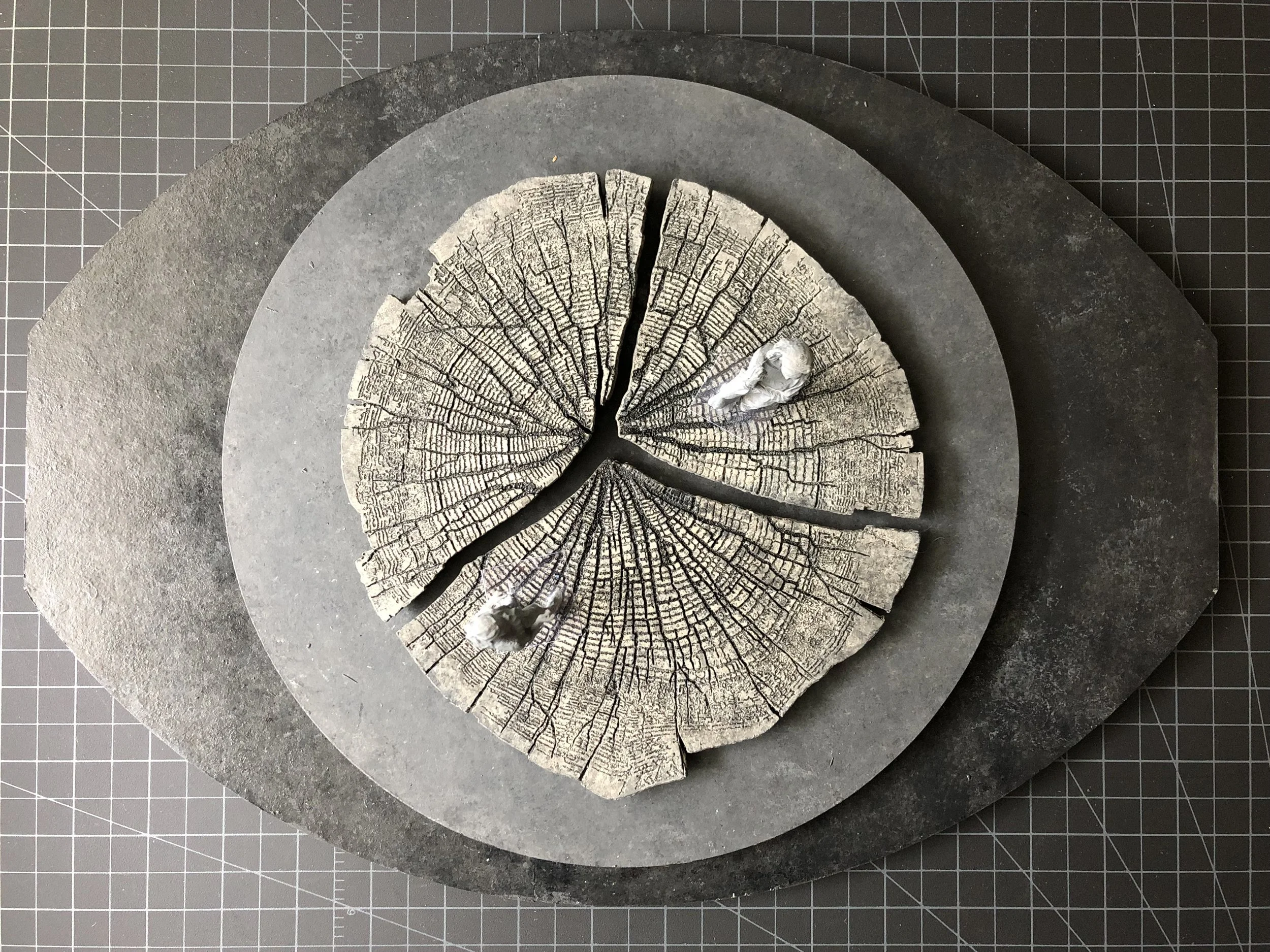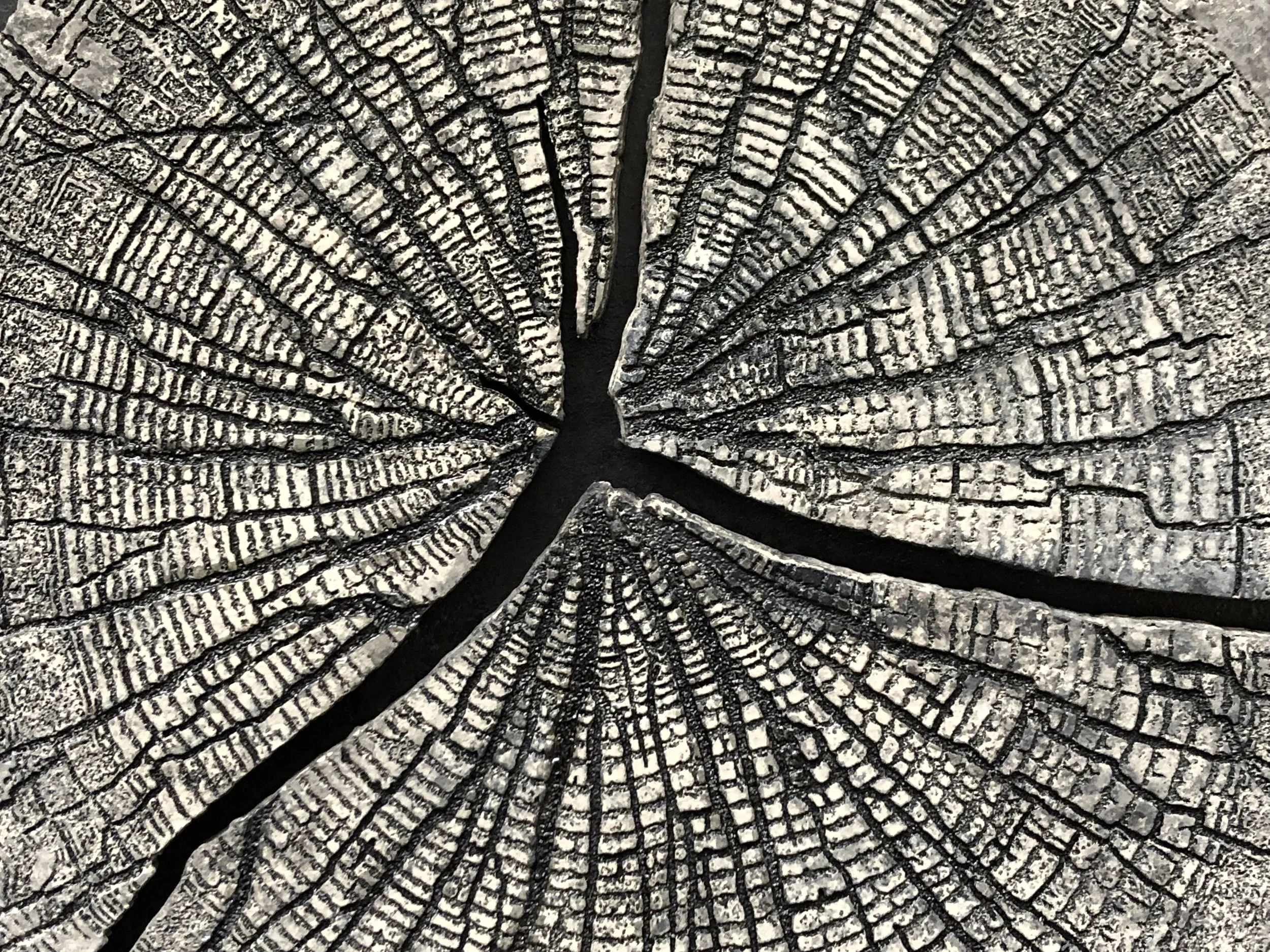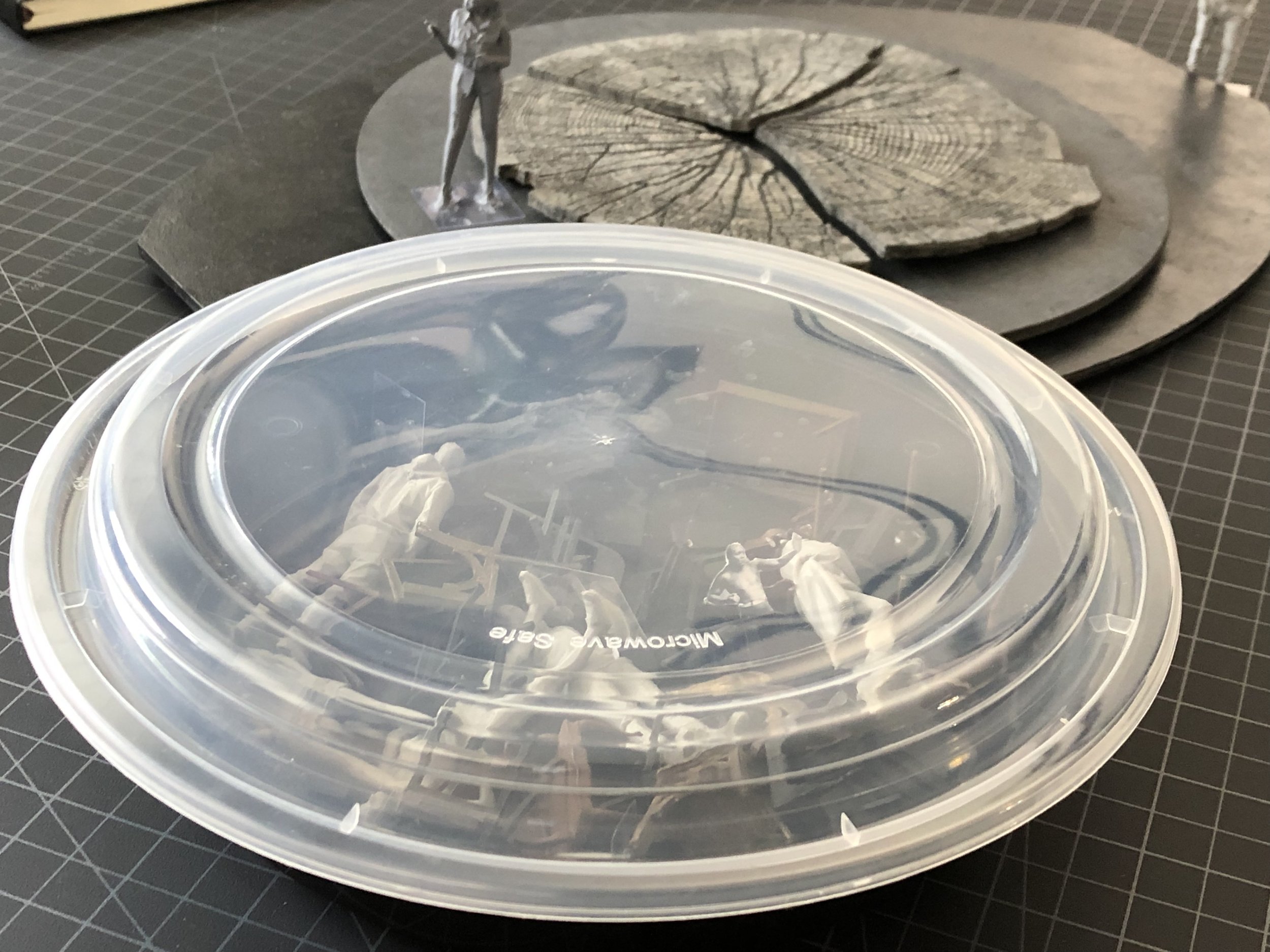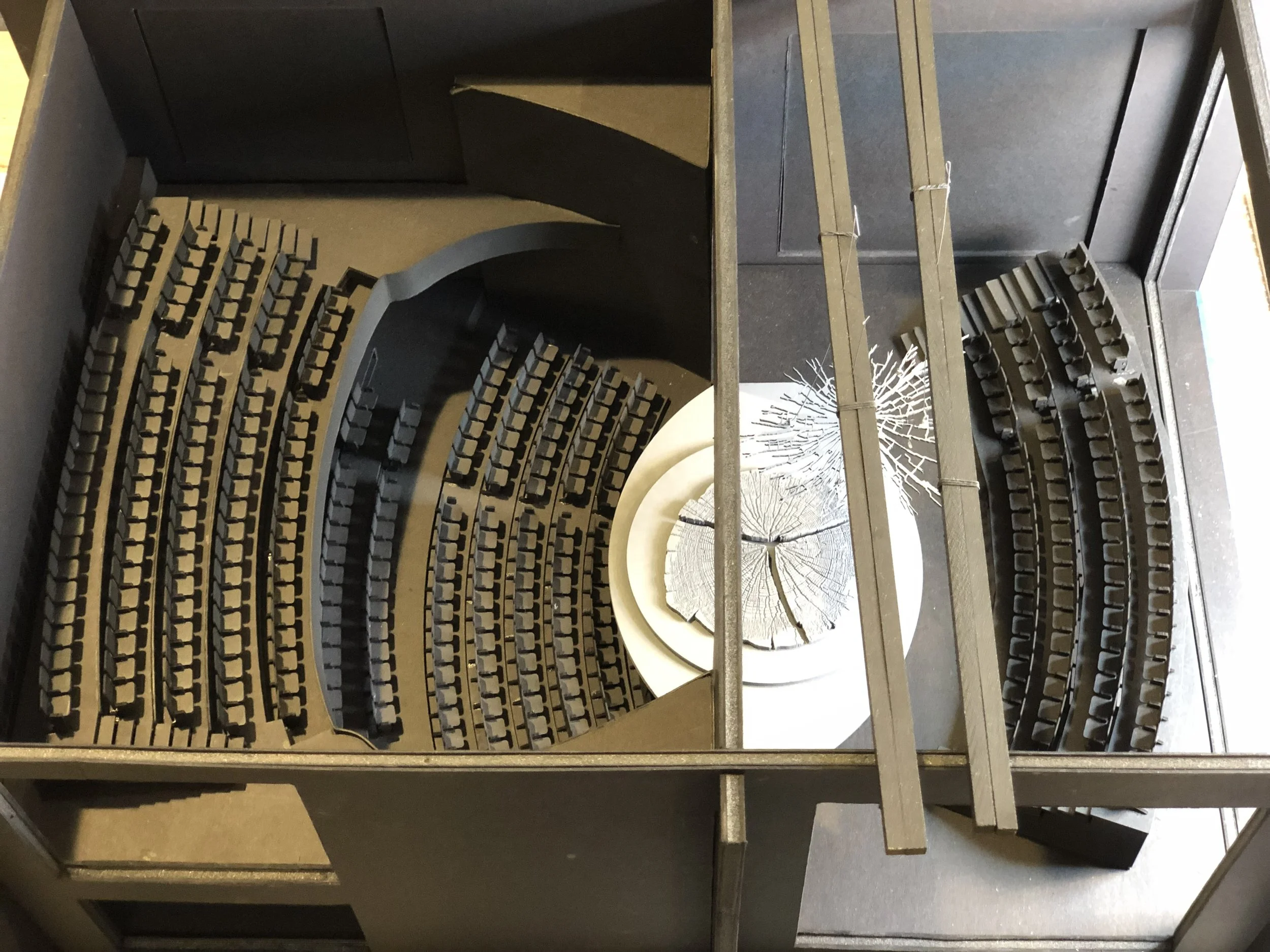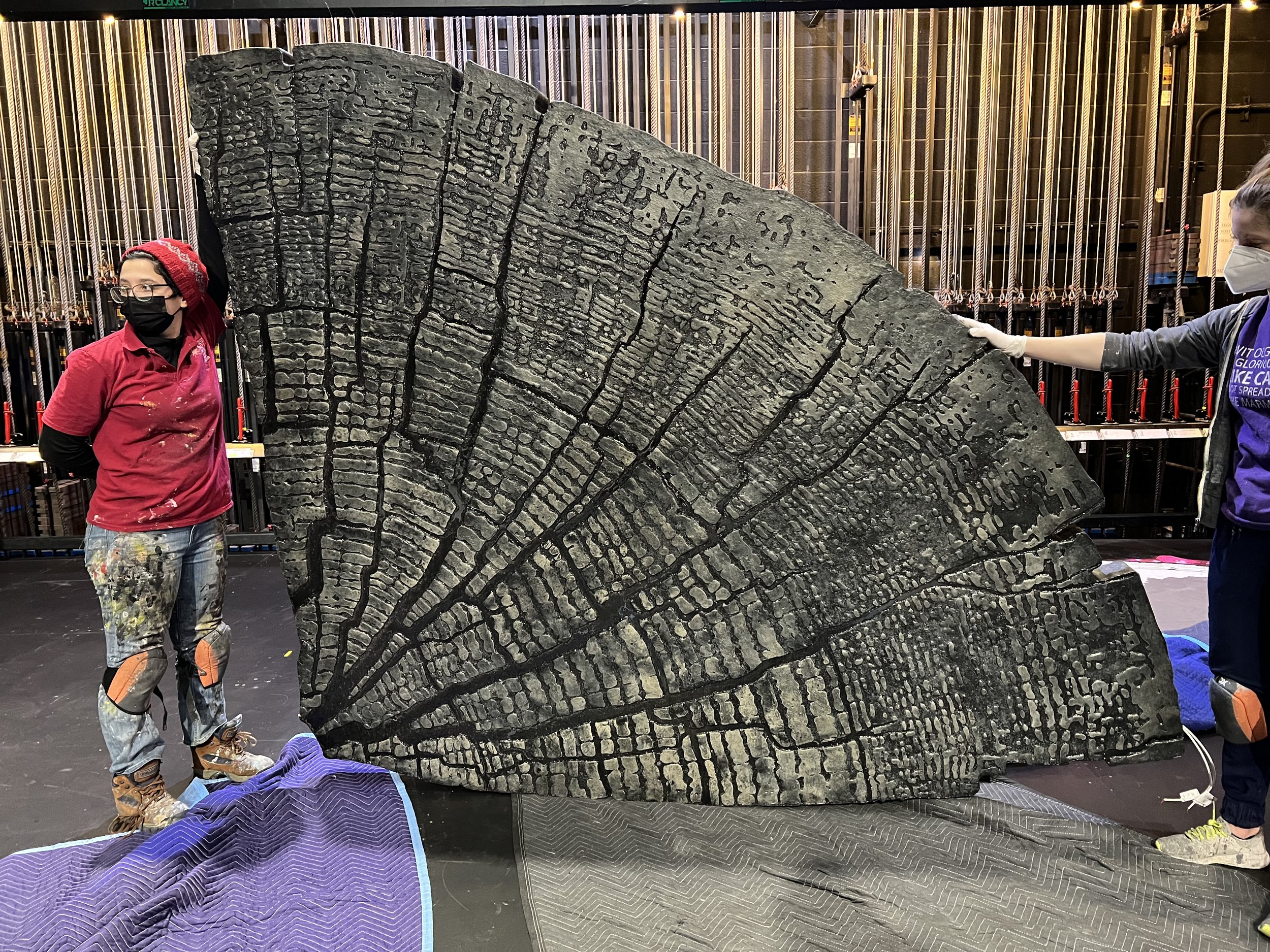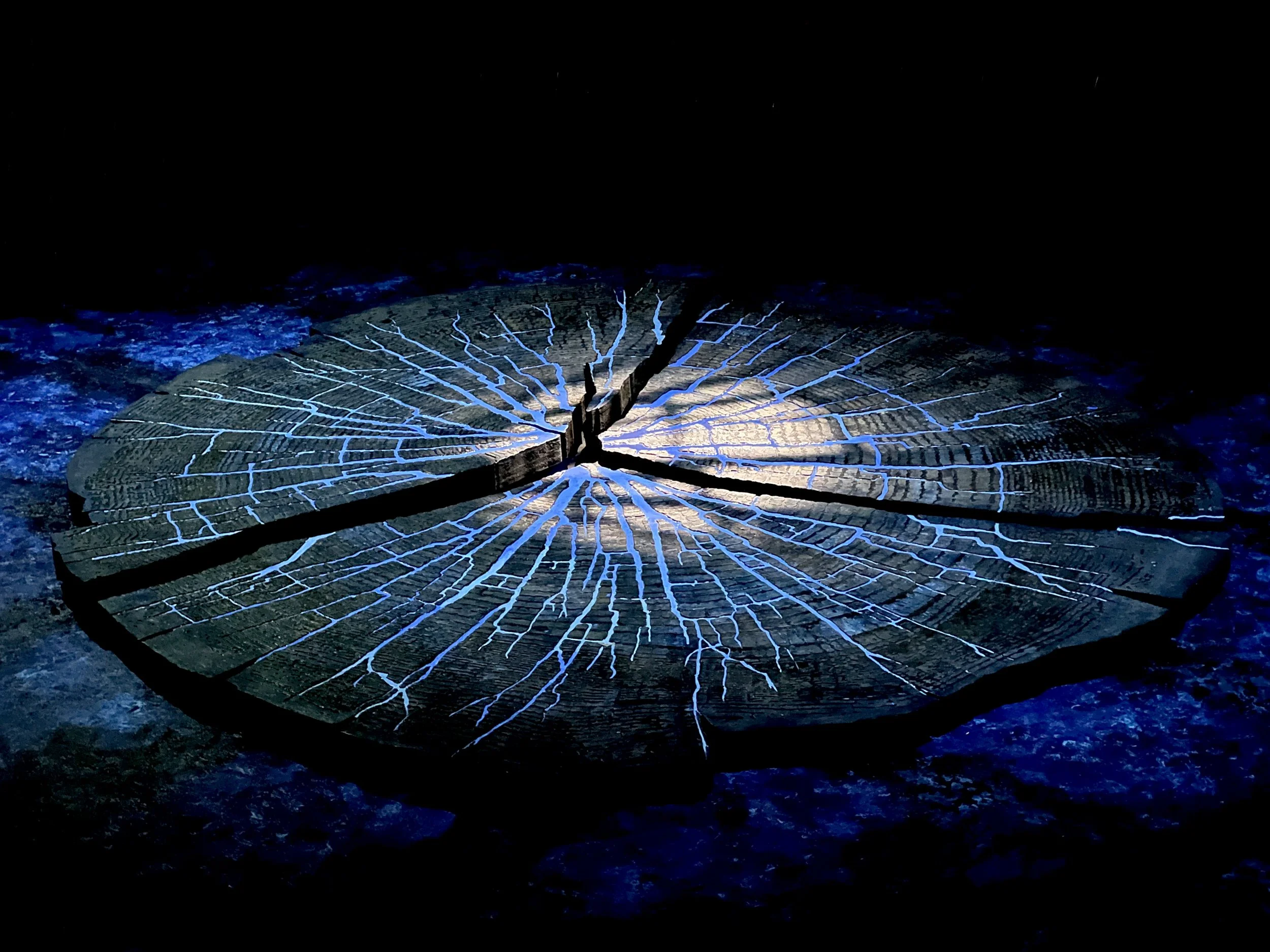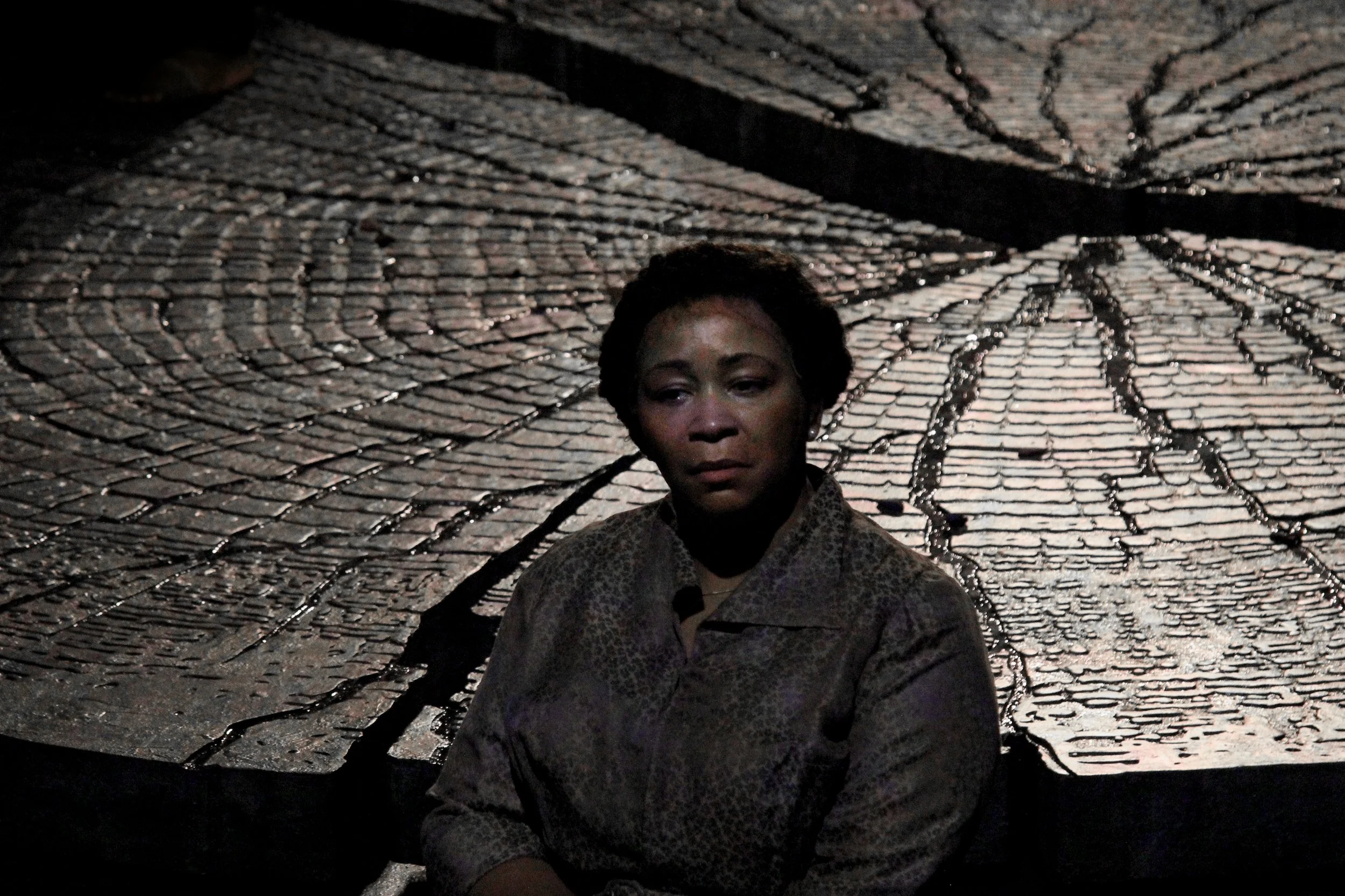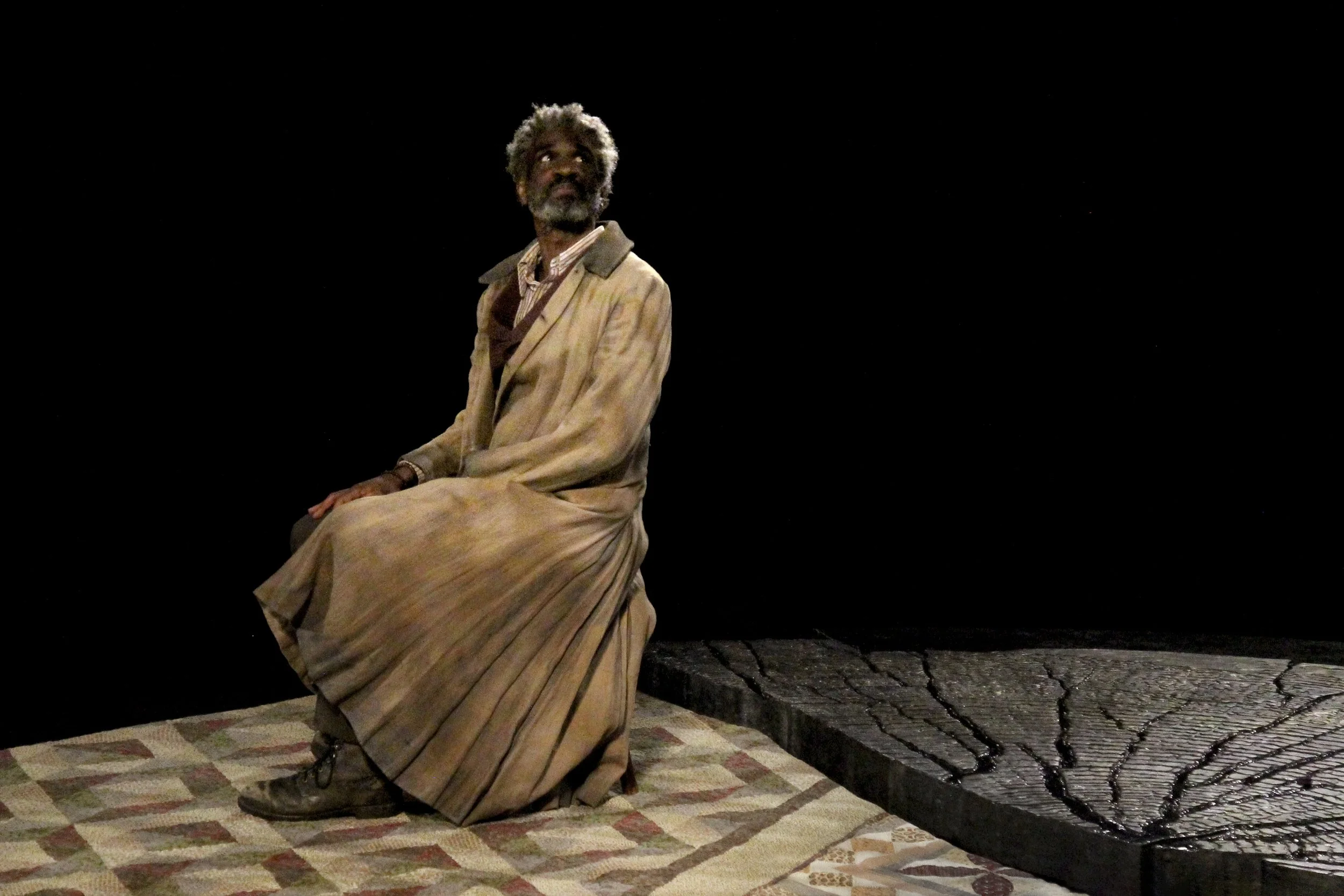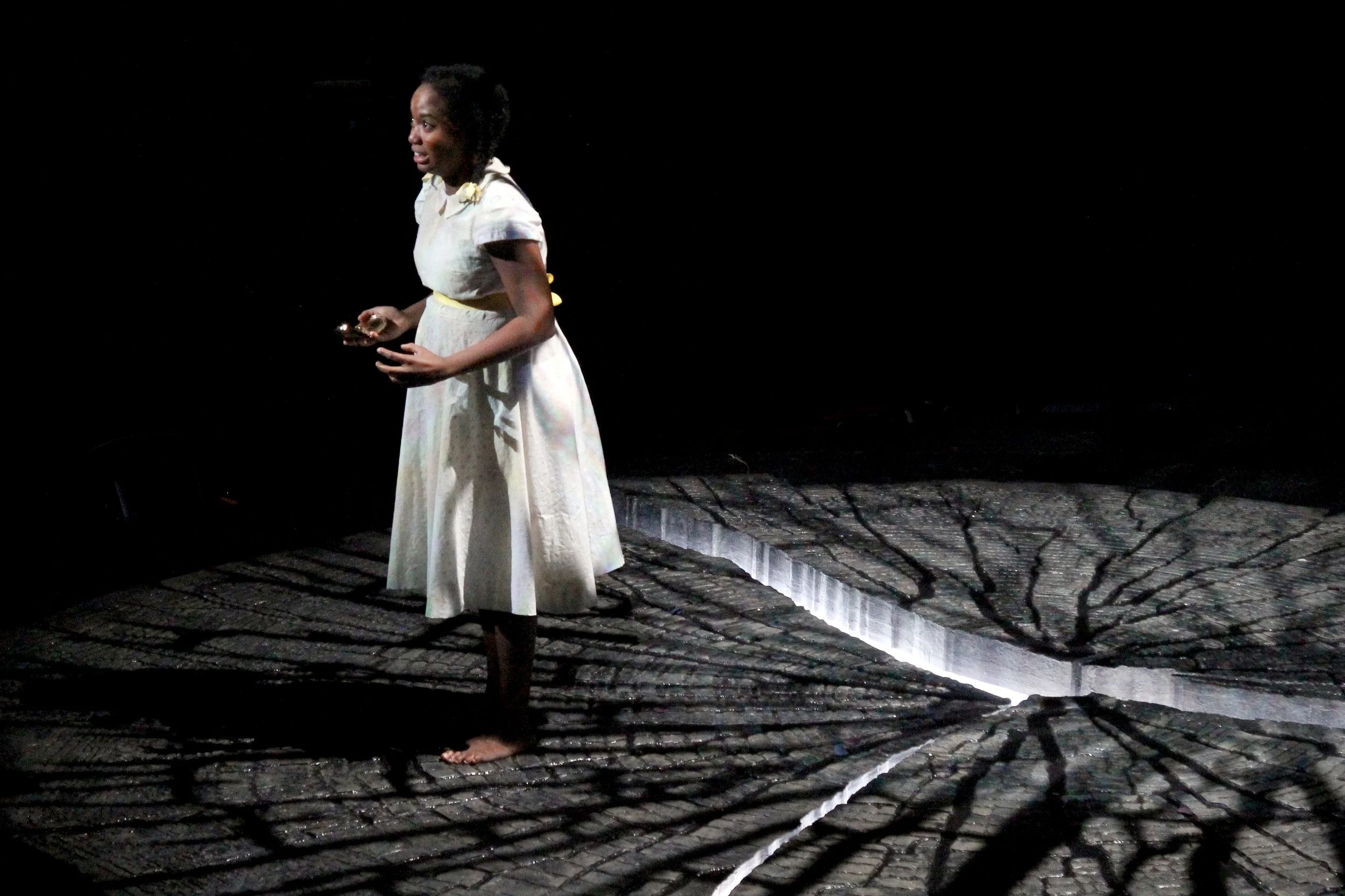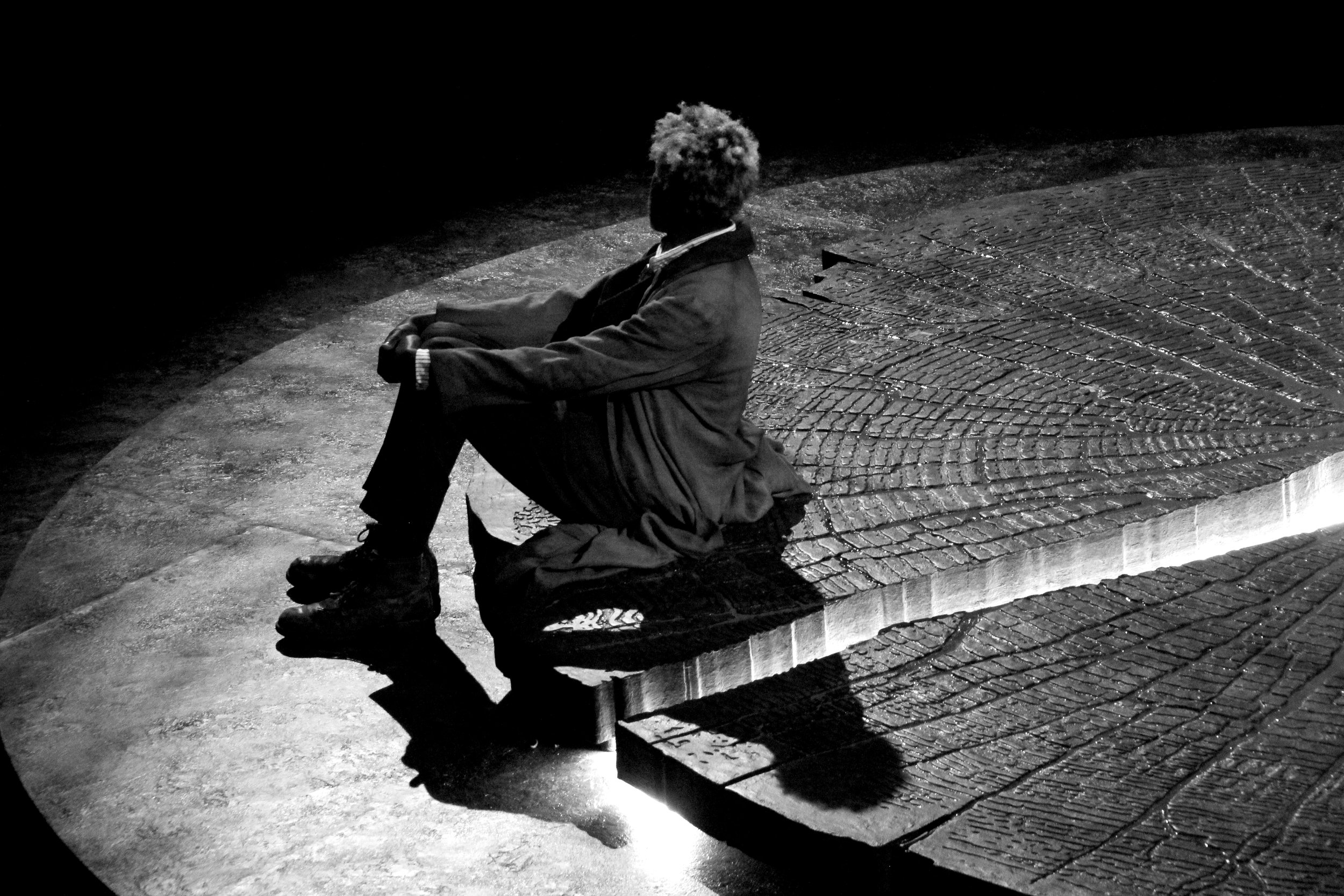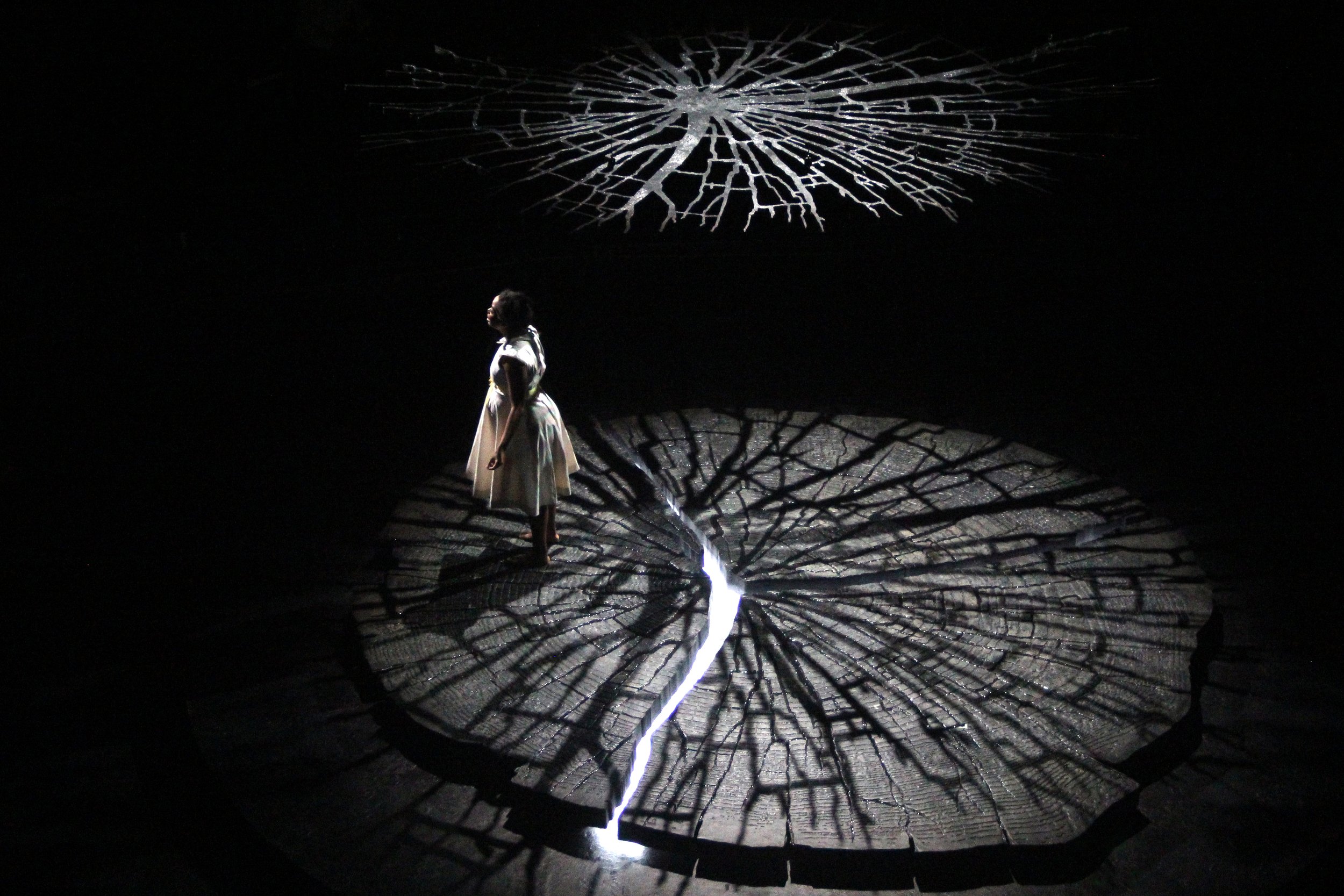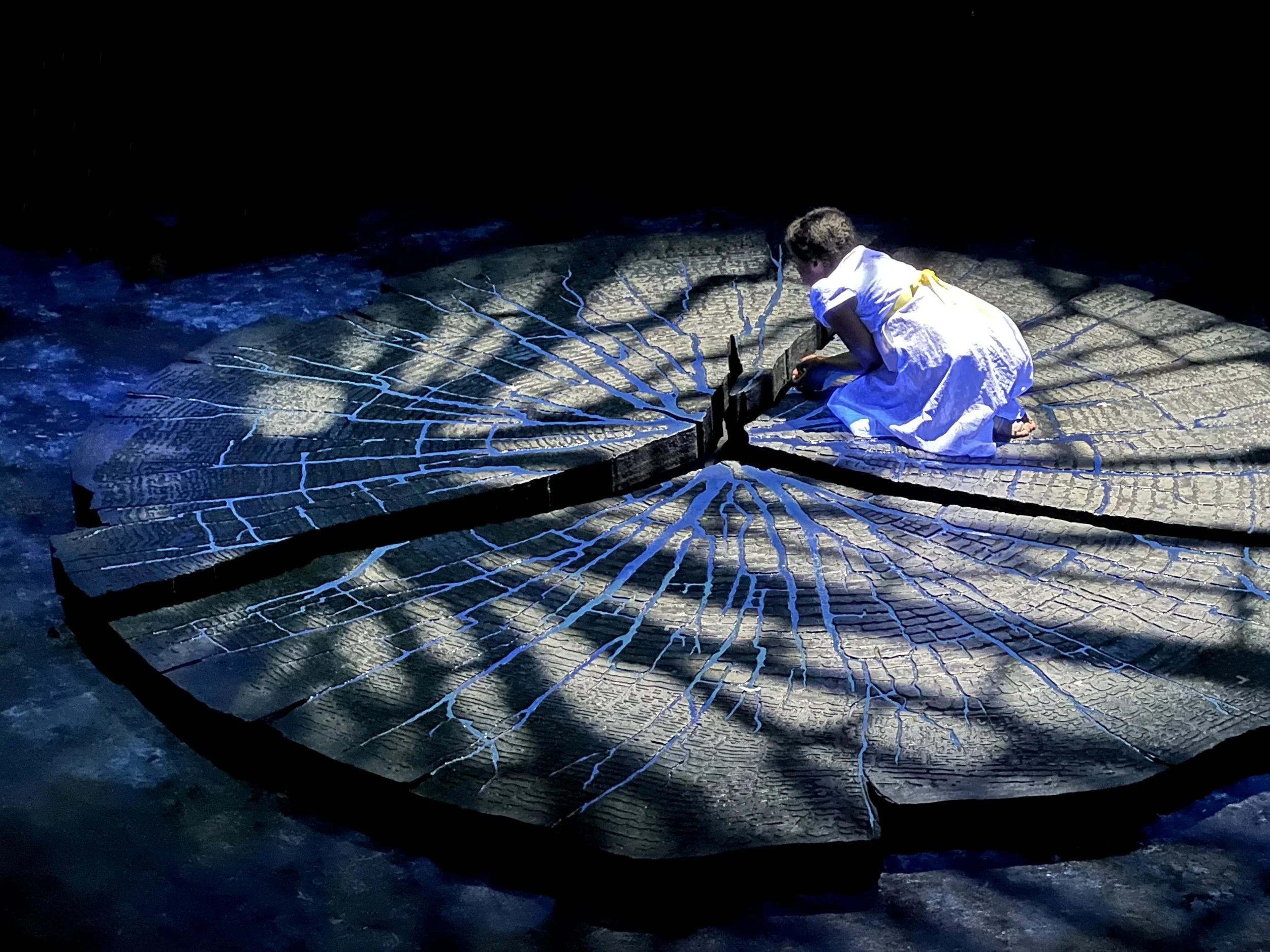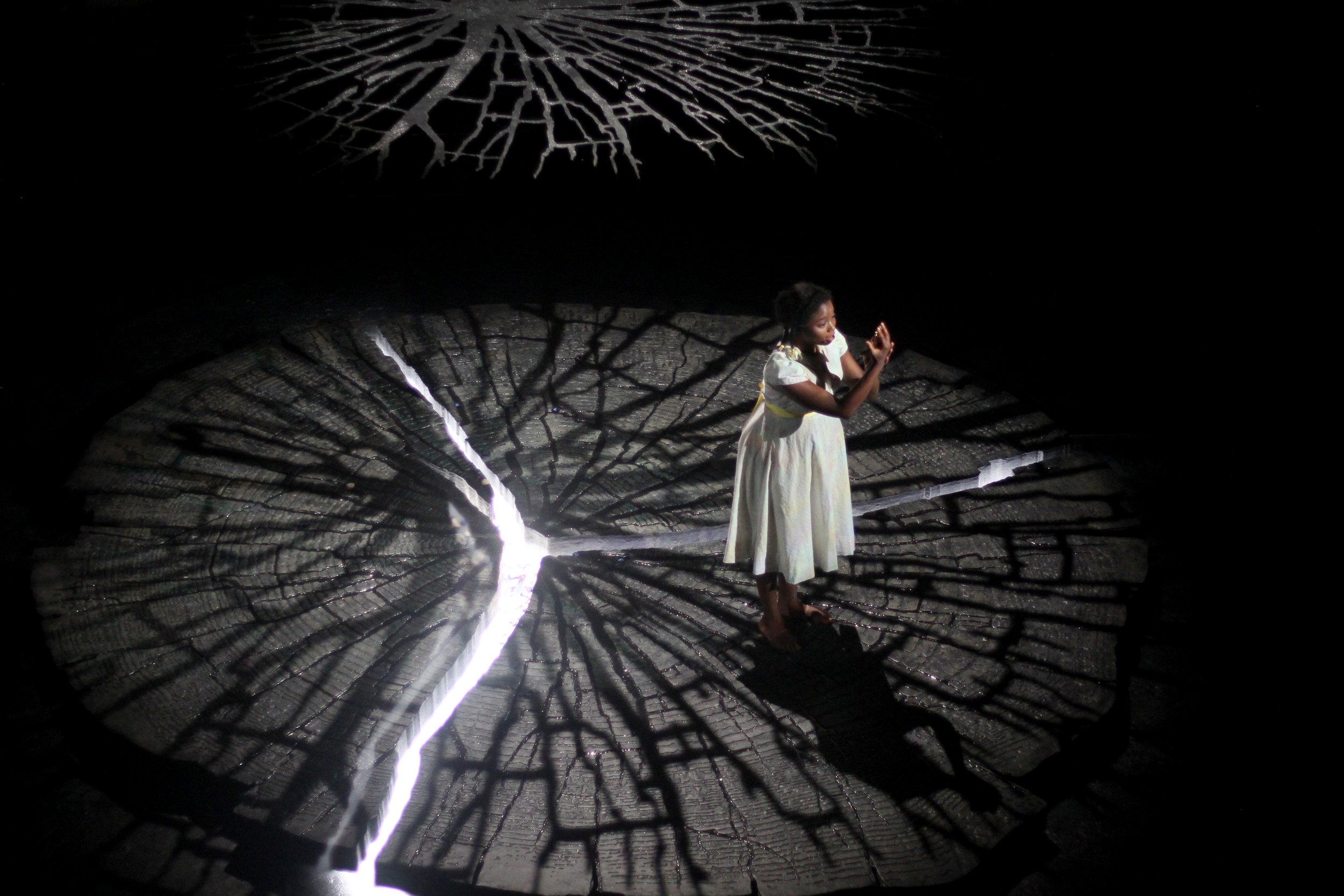THE BLUEST EYE DESIGN PROCESS
PRE-PANDEMIC 2020 DESIGN
The Bluest Eye was one of the countless productions that was supposed to open in the Spring of 2020, but had to be cancelled because of the pandemic.
The 2020 design for The Bluest Eye was in the Huntington Avenue Theater, and more or less followed the rules and conventions of the European-inspired proscenium theater space. The scene shop had just started building the scenery and rehearsals were about to begin when everything shut down.
2022 REDESIGN | PRACTICING REFUSAL
When the Huntington Theatre rescheduled the production for 2022, director Awoye Timpo and I realized that we had to set aside our original design and start over. So much had changed in our world over those two years - and we wanted to re-examine how to gather in space to share this story. Awoye started our collaboration by inviting us to lean into African storytelling tradition, and away from European storytelling tradition.
Because our venue was still a very Eurocentric presentational proscenium theater (now the Wimberly Theatre instead of the Huntington Ave Theatre), the first step of the process was to question the very fundamental assumptions of how people gather in a room, and to question the implied separation of people in the proscenium arch theater.
Our first design was a complete rejection / refusal of the space, superimposing an in-the-round storytelling circle within the combined space of the audience seating and stage-house, breaking the architectural hierarchy of the actor/audience separation.
2022 REDESIGN | PRACTICING REFUSAL WITHIN BUDGET
To their credit, the Huntington seriously studied how to achieve this design, but for a variety of reasons (budget, code / permits, budget, and budget), they came to the conclusion that it wasn’t feasible. So we embarked on a slightly more nuanced approach to subverting the rules of the space that was less of a rejection and more of an architectural conversation, retaining the spirit of the circular storytelling space, but achieving it within the language of the existing space.
VISUAL AND TEXTUAL INSPIRATION
The design of that circular space was inspired by Toni Morrison’s language (see quotes below) as well as imagery of cracked earth, tree roots under-ground feeding on the damaged soil made toxic from centuries of feeding on the violence and hatred of racism. There are permanent faults and cracks that make the navigation of the landscape challenging.
I was also interested in the architecture of the eye, the radial nerve structure inside the eye that looks like the tree root structure - also, the concentric rings of time emanating out from the center of the tree / space, and eventually including the rings of rows of audience in the storytelling circle. A way of connecting the past to the present.
“nothing remains but Pecola and the unyielding earth”
“I even think now that the land of the entire country was hostile to marigolds that year. This soil is bad for certain kinds of flowers. Certain seeds it will not nurture, certain fruit it will not bear, and when the land kills of its own volition, we acquiesce and say the victim had no right to live.”
“It never occurred to either of us that the earth itself might have been unyielding.”
“She owned the crack that made her stumble; she owned the clumps of dandelions whose white heads, last Fall, she had blown away; whose yellow heads, this Fall, she peered into. And Owning them made her part of the world, and the world a part of her.”
“There’s a crack shaped like a Y that I trip over most of the time. The ants go into that crack and I think they must have a whole world under there that makes some kind of sense to them.”
“We had dropped our seeds in our own little plot of black dirt just as Pecola’s father had dropped his seeds in his own plot of black dirt.”
MODELS & RENDERINGS
SCENE SHOP PROCESS
PRODUCTION PHOTOS
CLICK HERE FOR MORE PRODUCTION PHOTOS AND CREDITS










